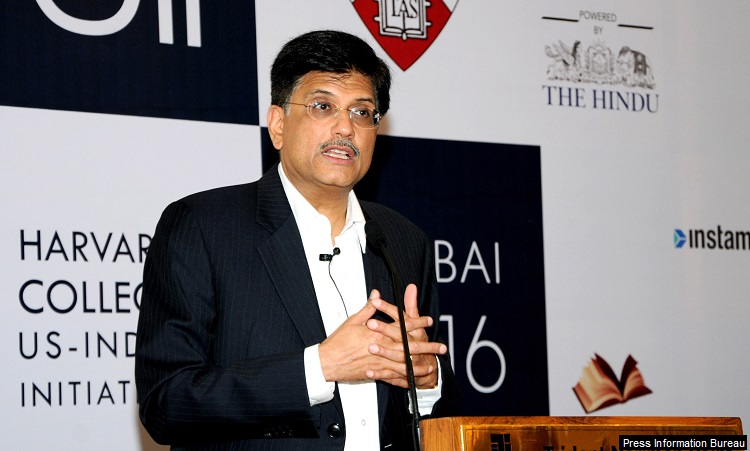Power Minister Goyal’s Claim On Village Electrification Partially True

Village electrification is progressing five times faster than it did during the tenure of the previous (United Progressive Alliance) government, Piyush Goyal, Minister of State for Power, Coal and New & Renewable Energy said recently.
However, more villages were electrified in 2006-07 than any year since: 28,706 villages (78.6 per day), the most over the last decade, during the United Progressive Alliance's (UPA) first term, according to government data. The next best year for villages electrified was 2009-10 with 18,374.
@SalmanSoz Facts clear, village electrification progressing 5 times faster now compared to last govt @grameenvidyut pic.twitter.com/rXyRM2pfaC
— Piyush Goyal (@PiyushGoyal) January 24, 2016
The five-time increase that Goyal refers to is based on villages electrified per day, i.e., 3.3 in 2013-14 as against 15.5 in 2015-16 (April-January), an increase of nearly 370% or nearly five times.
IndiaSpend sent an email to Goyal on March 28, 2016 requesting comment but there was no response. If we receive a response, we will update this story.
There has been independent verification of the government’s electrification claims, but this report in the Hindu suggested that at least some “electrified” villages had no electricity.
Calculated using data of villages electrified from 2013-14, the increase that Goyal refers to is nearly four times or 280%, from 1,197 in 2013-14 to 4,543 in 2015-16 (April-January).
Source: Rural Electrification Corporation Annual Report 2014-15; 2015-16; *Figure as on February 1, 2016; NA: Not Available
More than 7,000 villages have now been electrified according to a government release, last week. This shows a five time (399%) increase in village electrification over the last year, from 1,405 villages in 2014-15 to 7008 villages in 2015-16, as on March 23, 2016.
Under the visionary leadership of @narendramodi ji, a dramatic turnaround in village electrification pic.twitter.com/if3gQgQx9R
— Piyush Goyal (@PiyushGoyal) March 23, 2016
The Rural Electrification Corporation is the agency bringing electricity to villages across India.
The National Democratic Alliance (NDA)-government, led by the Bharatiya Janata Party (BJP), has promised “affordable, 24X7 power to all Indians by 2019”.
Only 1,500 villages were electrified in India in 1947. This has reached 585,097, as on February 29, 2016, of 597,464 villages in India.
1. The basic infrastructure such as distribution transformer and/or distribution lineis made available in the inhabited locality within the revenue boundary of the village including at least one hamlet/dalit basti (settlement for dalits, lowest Hindu caste) as applicable, and
2. Any of the public places like schools, panchayat office, health centre, dispensary, community centre avail power supply on demand, and
3. The number of households electrified should be minimum 10% for villages which are un-electrified before the village is declared electrified.
Source: Ministry of Power


